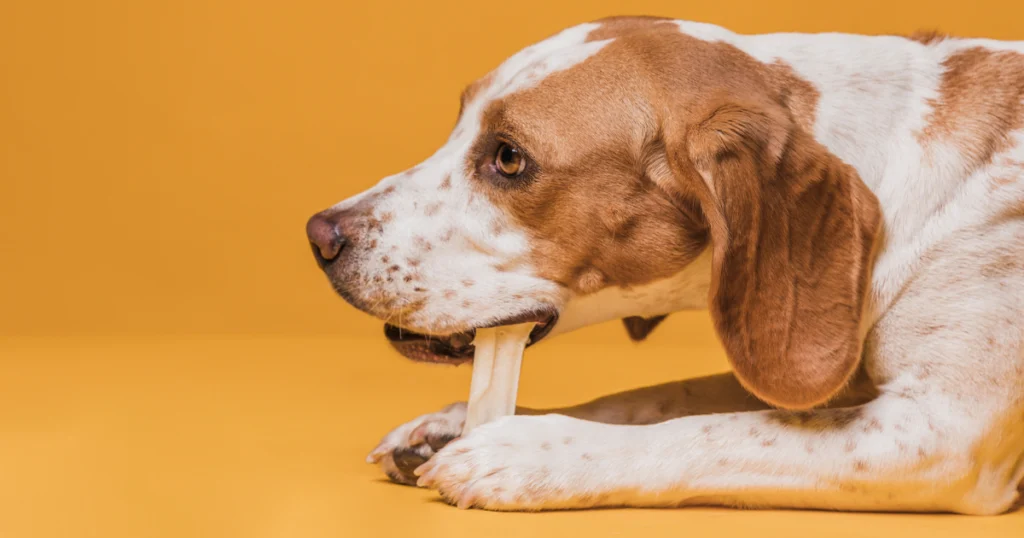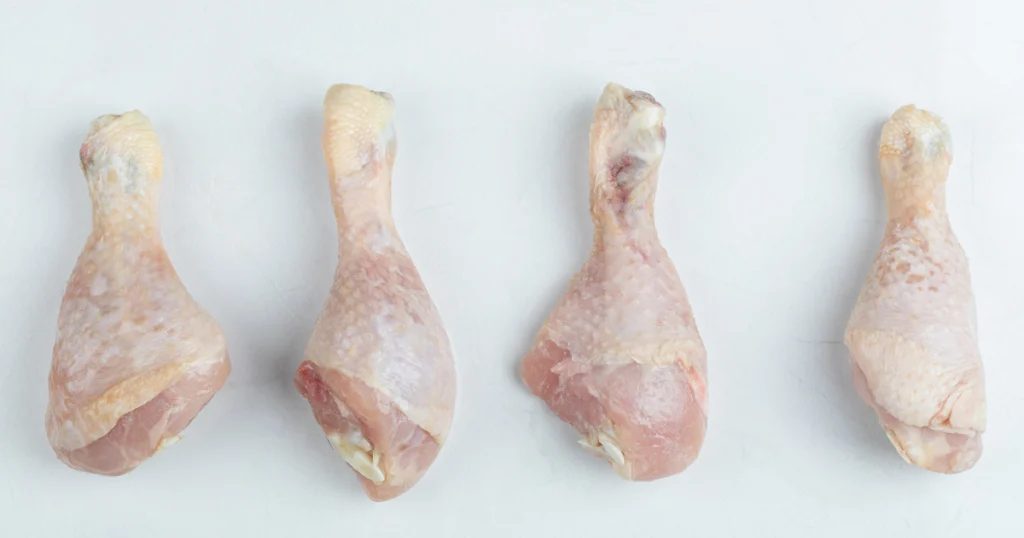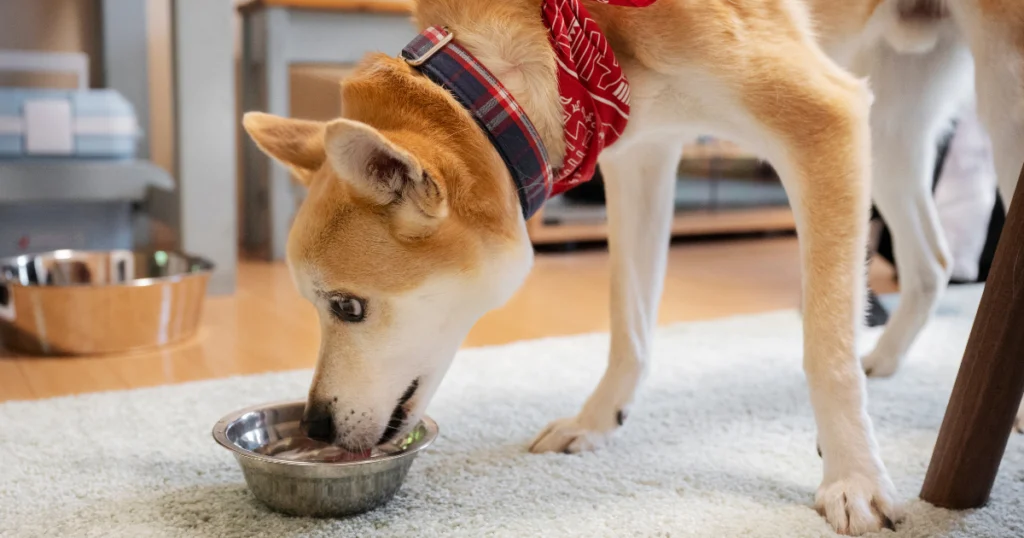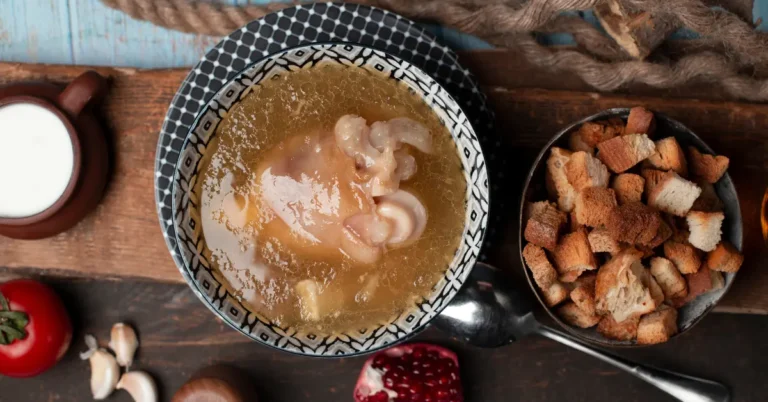With a rise in natural diets for pets, many owners ask, can dogs eat raw chicken bones? Raw feeding advocates claim it’s beneficial, while others highlight potential risks. Understanding the ins and outs of feeding raw chicken bones for dogs can help you make safe, informed choices. This article covers everything you need to know about dogs eating chicken bones, including benefits, risks, and safety tips. Whether you’re considering raw chicken legs or other bones, we’ve got you covered.
Table of Contents
Can Dogs Eat Raw Chicken Bones? The Essential Answer
The primary question remains, can dogs eat raw chicken bones safely? Generally, yes, raw bones are safer than cooked bones because they are softer and less likely to splinter. However, every dog is different, and considering their size, breed, and individual health is crucial.
The Difference Between Raw and Cooked Chicken Bones for Dogs
Raw bones have a softer structure, making them less likely to break into sharp fragments compared to cooked bones, which tend to become brittle and splinter. Dogs eating chicken bones raw are therefore at a reduced risk of internal injuries, making raw bones a safer option.

Nutritional Benefits of Feeding Raw Chicken Bones to Dogs
Feeding raw chicken bones offers several nutritional benefits. These bones contain essential minerals like calcium, phosphorus, and magnesium, which contribute to a dog’s overall health. Plus, dogs eating chicken bones in their raw form are closer to their ancestral diet, promoting natural instincts and well-being.
Calcium and Bone Health
Bones are a fantastic source of calcium, which supports your dog’s bones, teeth, and muscles. Regular intake of calcium-rich foods, like raw bones, ensures that your dog’s skeletal system stays strong. So, can dogs eat chicken bones for a calcium boost? Yes, when given in moderation, they make an excellent source of this vital mineral.
Phosphorus and Energy Metabolism
Raw bones provide phosphorus, which works with calcium to support healthy bones. Phosphorus also plays a role in energy metabolism and cell function, making it an important nutrient for active dogs. Therefore, raw bones help keep your pet healthy and energetic.
The Risks of Feeding Raw Chicken Bones to Dogs
Even though raw bones are generally safer than cooked ones, there are still risks involved. Knowing what could go wrong helps you take steps to protect your pet.
Risk of Choking and Blockages
Can dogs eat raw chicken bones without choking? While many dogs can chew and swallow bones with no issue, some dogs may gulp them down, leading to choking hazards. It’s crucial to monitor your dog to ensure they’re not swallowing pieces that are too large.

Internal Injuries from Splinters
Even with raw bones, there’s a slight risk of splinters, especially if the bones are swallowed whole or broken down improperly. Splinters can cause internal injuries in the digestive tract, leading to pain or bleeding. When feeding raw bones, supervise your pet to ensure they’re chewing the bone well and not breaking off large, sharp pieces.
Bacterial Contamination Risk
Feeding raw chicken bones carries a risk of bacterial contamination, including Salmonella. While dogs generally have strong stomach acids that help kill bacteria, they’re not completely immune. Proper storage and handling of raw bones are essential to minimize bacterial risks.
Why Some Dog Owners Opt for Raw Chicken Bones
Despite the potential risks, many pet owners choose raw chicken bones for dogs as part of a balanced diet. The benefits include mental stimulation, dental health, and nutrient intake, making raw bones a versatile food choice.
Dental Health Benefits
Chewing raw bones helps clean your dog’s teeth naturally. The abrasion from bone-chewing can help remove tartar, improve gum health, and reduce bad breath. Regularly allowing your dog to eat chicken bones in moderation can support a cleaner, healthier mouth.
Mental Stimulation and Satisfaction
Chewing bones satisfies a dog’s natural instinct, providing mental stimulation and preventing boredom. Bone-chewing can keep dogs occupied for hours, making it a great activity that also has dietary benefits.
Safe Ways to Feed Raw Chicken Bones to Your Dog
To help your dog enjoy raw chicken bones safely, follow these guidelines to minimize risks.

Match the Bone Size to Your Dog
Different breeds and sizes require different bones. For smaller dogs, go for chicken necks or wings. Larger breeds might handle larger bones, like thighs or drumsticks, more comfortably. Selecting bones that match your dog’s size can help prevent choking or blockages.
Feed in Moderation
Moderation is key. Feeding dogs raw chicken bones too often can lead to digestive issues, such as constipation from excessive calcium intake. One or two bones per week should be enough to reap the benefits without overloading their system.
Supervise and Observe Chewing Behavior
Monitor your dog closely when they’re chewing bones. Ensure they chew properly and don’t attempt to swallow large pieces whole. If you observe any sign of distress, remove the bone immediately to prevent choking or injury.
What to Do If Your Dog Ingests a Chicken Bone by Accident
If your dog ingested a chicken bone accidentally, it’s important to monitor them for any unusual symptoms. While raw bones are generally safer than cooked bones, complications can still arise.
Watch for Signs of Discomfort
After a dog ingests chicken bones, check for any symptoms of distress, such as vomiting, gagging, or difficulty swallowing. Abdominal pain or a bloated appearance can indicate a blockage. If your dog seems unwell, consult your vet immediately.
Contact Your Vet if Necessary
If you observe any worrying symptoms, call your veterinarian for advice. Your vet may recommend monitoring your dog or bringing them in for a check-up to ensure everything is fine.

Addressing Common Questions on Feeding Dogs Raw Chicken Bones
Is It Safe for Dogs to Eat Raw Chicken Bones?
Yes, dogs can eat raw chicken bones because they’re softer and less likely to splinter than cooked bones. Always supervise your dog when eating bones to prevent choking and ensure proper chewing.
Can I Give My Dog a Raw Chicken Leg?
Yes, but be cautious. Can dogs eat chicken bones like a raw leg? Yes, but monitor them closely. Chicken legs are larger bones that may pose a choking risk, especially for smaller dogs. Ensure your dog chews thoroughly.
Do Raw Chicken Bones Splinter?
Raw chicken bones are less likely to splinter than cooked bones, making them safer. However, they’re not completely risk-free, so always supervise to prevent any issues from chewing or swallowing improperly.
What if My Dog Eats a Chicken Bone?
If your dog ate a chicken bone by accident, keep an eye on them for symptoms like coughing, vomiting, or abdominal pain. Call your veterinarian if you notice any concerning signs, as they can guide you on the next steps.
Key Takeaways on Raw Chicken Bones for Dogs
Feeding raw chicken bones for dogs can be safe and nutritious when done correctly. They provide essential nutrients like calcium and phosphorus, promote dental health, and satisfy your dog’s natural instincts. However, it’s essential to weigh the risks and follow safety guidelines. Here’s a quick recap to keep your dog safe while enjoying the benefits of raw chicken bones:
- Always Supervise: Ensure your dog is chewing bones properly and not swallowing large pieces.
- Choose the Right Size: Match the bone size to your dog’s breed and size to minimize choking hazards.
- Feed in Moderation: A couple of bones per week are enough to provide health benefits without overdoing it.
- Monitor for Signs of Distress: If your dog eats a bone unexpectedly, watch for any signs of discomfort.
By following these steps, can dogs eat raw chicken bones without major risks? Yes, with careful supervision and proper handling, raw chicken bones can be a healthy addition to your dog’s diet.





